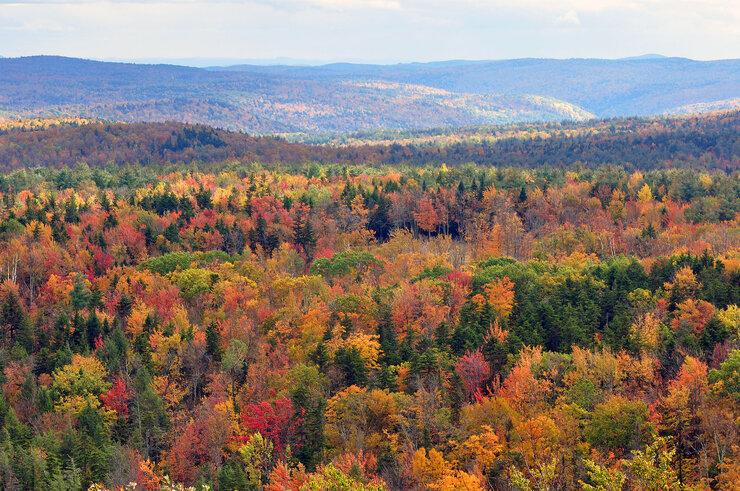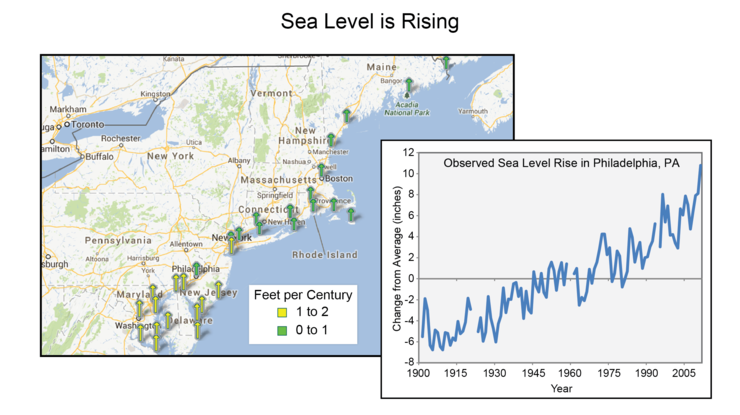A region in the midst of change
Over the past three decades, there has been significant population movement in the Northeast towards the coastline. Working waterfronts are part of the economic engine driving coastal redevelopment. Some portions of the region have seen significant land cover changes such as increases in paved surfaces, and reductions and shifts in trees, forests, grasses, and wetlands.
A critical issue for the Northeast is addressing its aging infrastructure: roads, bridges, railroad lines, water and wastewater pipelines, culverts, and electrical power networks. The region has the oldest industry and building inventory in the United States, much of which was built along the coast and in estuaries—both of which are highly vulnerable to flooding.
The region's climate is also changing. Recent State of the Climate reports point out the likely impacts of a changing climate on both human and natural resources, which are threatened by rising temperatures, changing precipitation patterns, and a warming ocean, especially in the Gulf of Maine. The stretch of coastline from the tip of the Delmarva Peninsula in Virginia to the elbow of Cape Cod in Massachusetts is experiencing the greatest increase in sea level rise rate globally: 2 to 3.7 mm per year—more than three times the global average.






